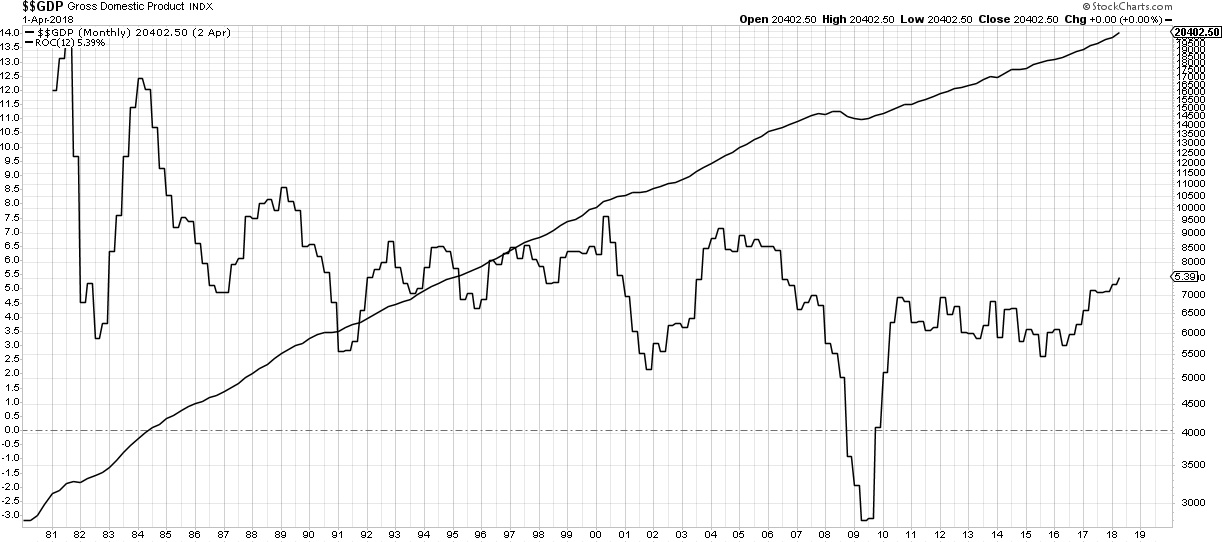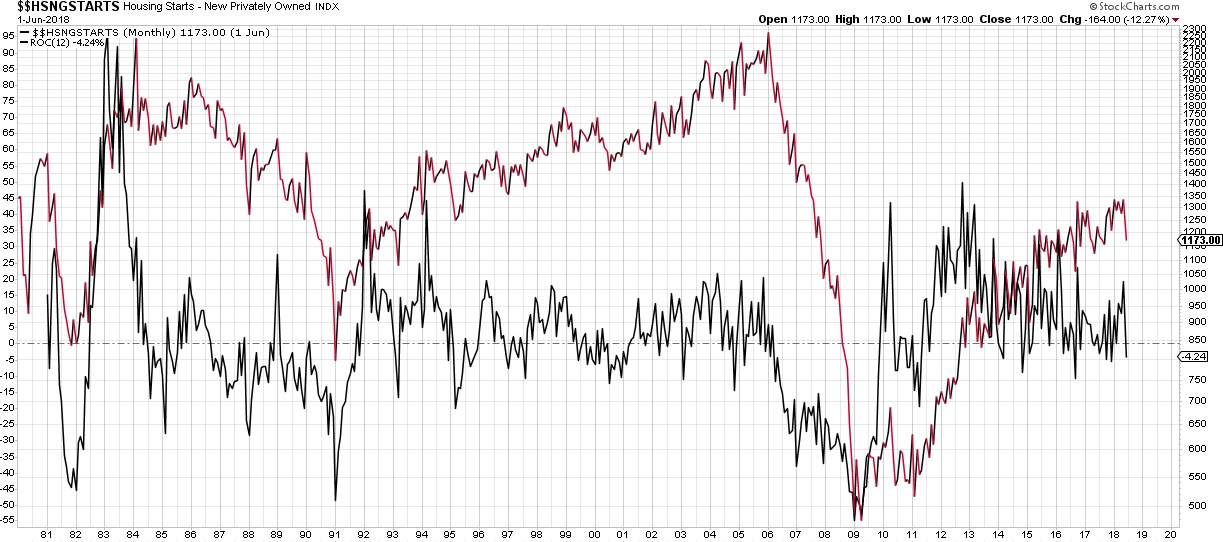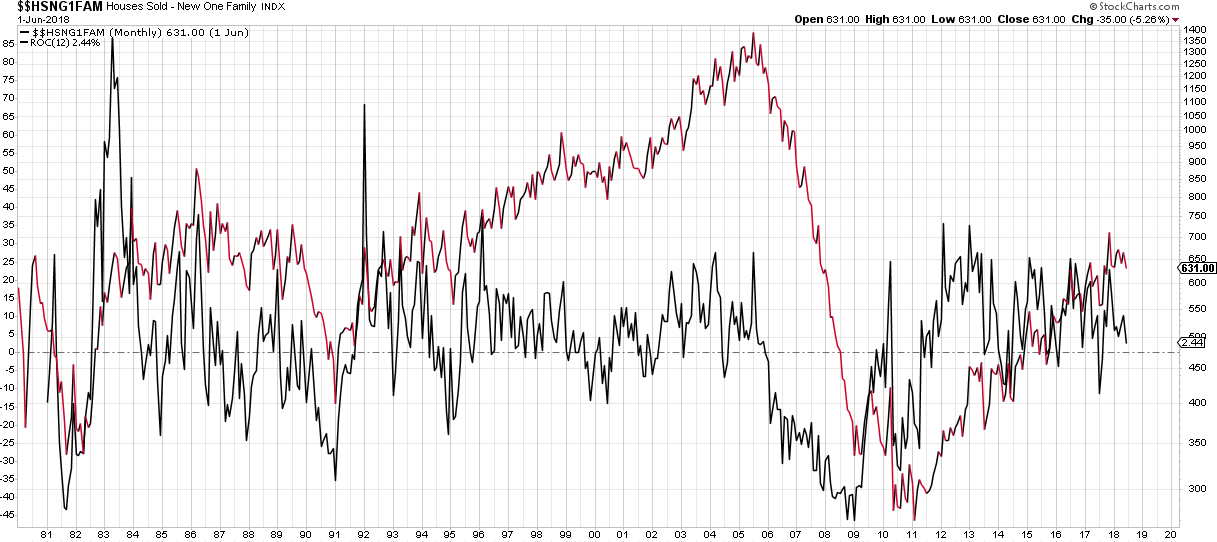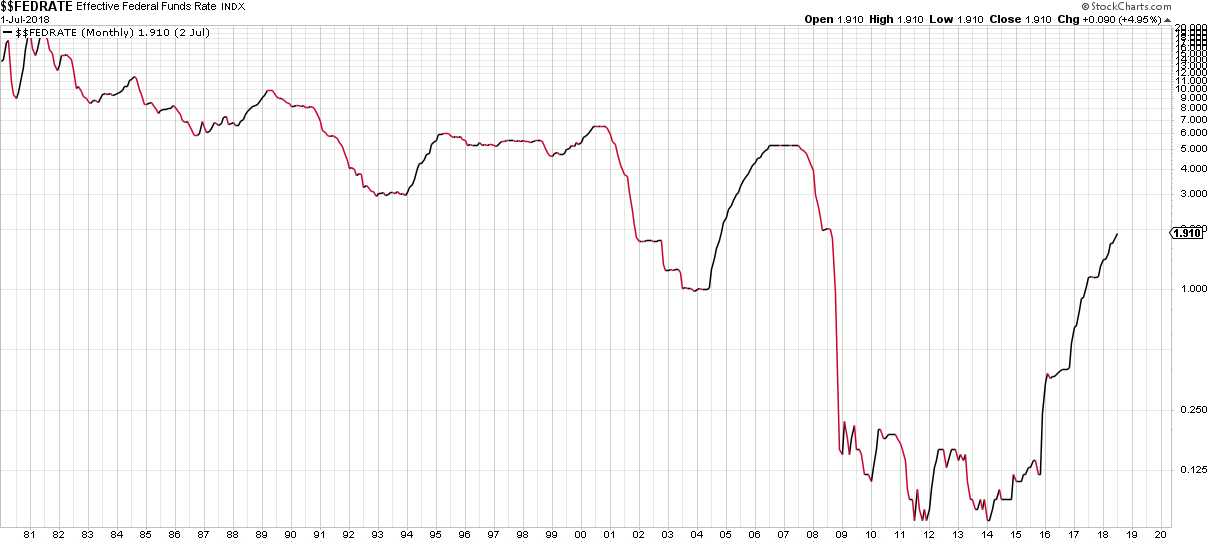Headline GDP growth for the second quarter of 2018 was great. It was nice to finally see what appeared to be robust growth in the US economy. As we mentioned last week, US growth finally broke out (nominally) above what we deem as important resistance.
The question we have to ask ourselves now, as investors, is whether the growth we have witnessed recently is sustainable.
In order to dig a little deeper in an attempt to ascertain whether this is the case, we want to take a closer look at the housing market. Why housing? We believe housing trends are a great indicator of the overall strength of the US consumer. So if we can get the housing trend right, then we should be able to get the ultimate trend of the consumer correct. If the consumption is approximately 70 percent of US GDP, then we must pay attention to housing. So now that you all follow the logic, we want to illustrate some concerning trends we are witnessing in housing that have us questioning the sustainability of recent US economic activity...
Some concerning trends are present in the Housing Starts breakdown above. Housing starts have now been declining year over year, dropping over 4%. Now, before everyone gets too pessimistic, this time series is extremely volatile. In fact, from a historical standpoint, support tends to reside around -10% on the rate of change line (black). However, the direction of the line is not a good sign. We would like to see this indicator rebound and break to new highs, otherwise, the housing market may have peaked.
Another indicator of housing market strength and weakness is a measure of single family homes sold. We like this measure because it is a good indication, at least historically, of housing demand. Unfortunately, year over year growth in houses sold has slowed dramatically. Prior to the global financial crisis, new single family homes sold started declining in 2006. It was a good leading indicator of economic weakness to come as a nasty recession hit the US economy in 2008.
Housing Affordability
Why the sudden decline in housing? We believe the main issue is affordability. As the Federal Reserve has tightened credit conditions by raising interest rates and reducing their balance sheet, housing affordability has taken a hit (see chart below). Therefore, sales are starting to show weakness, and prices are following.
Even lumber prices are dropping, indicating a lack of demand (page 6). The home builders sector gave a sell signal earlier in the year and has been under increased pressure. The sector has failed to rally substantially, diverging from the broader market indices (page 7). This divergence is negative for housing, and potentially negative for broader consumption and the economy overall. If these conditions continue, the recent strength in the US economy could evaporate.
WealthShield is a division of Emerald Investment Partners, an SEC Registered Investment Advisor. Advisory services are only offered to clients or prospective clients where WealthShield and it’s representatives are properly licensed or exempt from licensure. Past performance is no guarantee of future returns. Investing involves risk and possible loss of principal capital. No advice may be rendered by WealthShield unless a client service agreement is in place. Before investing, consider your investment objectives and WealthShield’s charges and expenses.
Recommended Content
Editors’ Picks
EUR/USD edges lower toward 1.0700 post-US PCE

EUR/USD stays under modest bearish pressure but manages to hold above 1.0700 in the American session on Friday. The US Dollar (USD) gathers strength against its rivals after the stronger-than-forecast PCE inflation data, not allowing the pair to gain traction.
GBP/USD retreats to 1.2500 on renewed USD strength

GBP/USD lost its traction and turned negative on the day near 1.2500. Following the stronger-than-expected PCE inflation readings from the US, the USD stays resilient and makes it difficult for the pair to gather recovery momentum.
Gold struggles to hold above $2,350 following US inflation

Gold turned south and declined toward $2,340, erasing a large portion of its daily gains, as the USD benefited from PCE inflation data. The benchmark 10-year US yield, however, stays in negative territory and helps XAU/USD limit its losses.
Bitcoin Weekly Forecast: BTC’s next breakout could propel it to $80,000 Premium

Bitcoin’s recent price consolidation could be nearing its end as technical indicators and on-chain metrics suggest a potential upward breakout. However, this move would not be straightforward and could punish impatient investors.
Week ahead – Hawkish risk as Fed and NFP on tap, Eurozone data eyed too

Fed meets on Wednesday as US inflation stays elevated. Will Friday’s jobs report bring relief or more angst for the markets? Eurozone flash GDP and CPI numbers in focus for the Euro.



